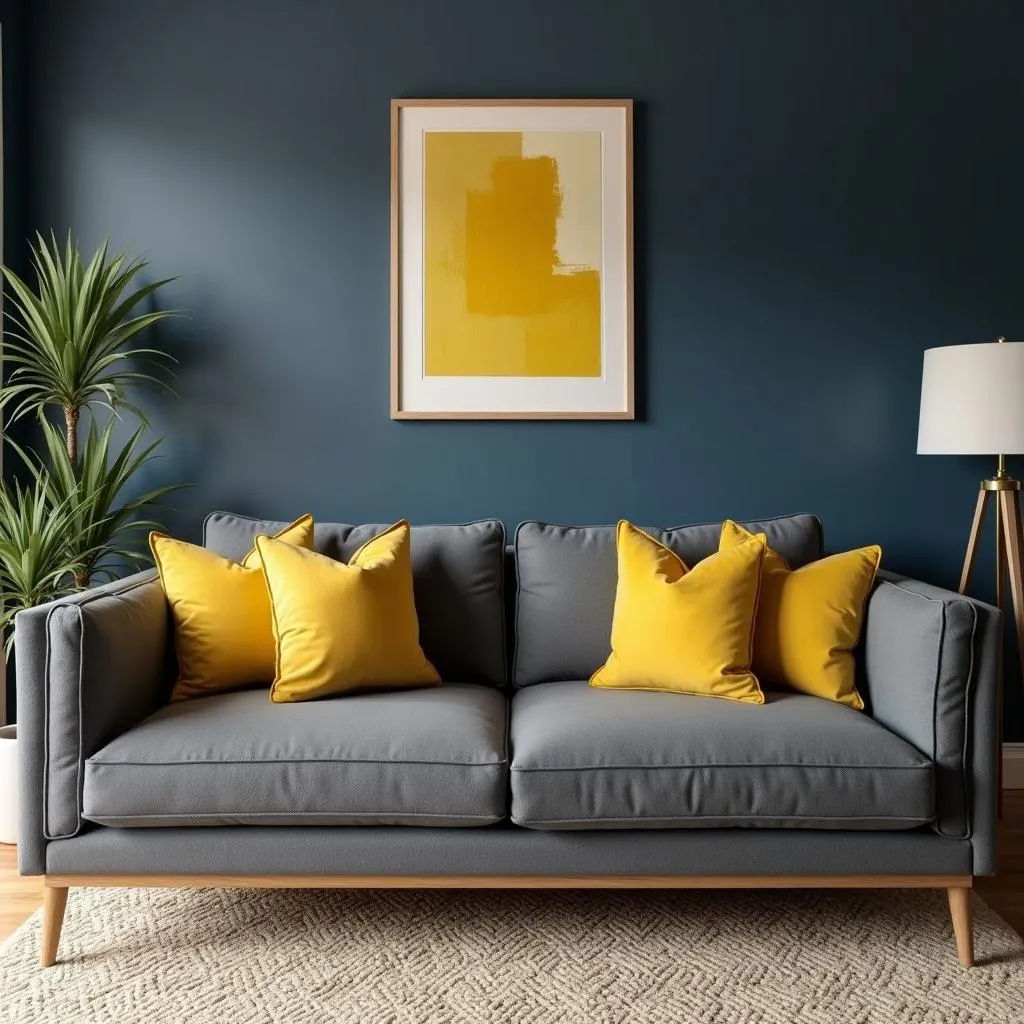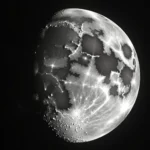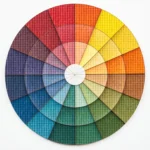Dark blue is a versatile color that can evoke feelings of calmness, sophistication, and trust. It’s a popular choice for home decor, fashion, and branding, but it can sometimes feel a bit heavy or overwhelming, especially in large doses. The key to making dark blue shine is to pair it with colors that complement its depth and richness, creating a balanced and visually appealing palette.
Understanding the Color Wheel: Finding Dark Blue’s Perfect Partners
The color wheel is your best friend when it comes to understanding color relationships. Dark blue sits confidently on the cool side of the spectrum, and by strategically selecting colors from different segments of the wheel, we can create stunning contrasts and harmonies.
Complementary Colors: The Power of Opposites
Complementary colors sit directly opposite each other on the color wheel. For dark blue, its complement is orange. This pairing creates the strongest contrast, adding vibrancy and energy to the space.
- Think bold: A dark blue accent wall with a burnt orange sofa creates a sophisticated yet lively atmosphere.
- Subtle touches: Introduce orange through accessories like throw pillows, vases, or artwork.
Analogous Colors: Flow and Harmony
Analogous colors sit next to each other on the color wheel, creating a sense of harmony and flow. For dark blue, consider pairing it with greens and purples.
- Serene and tranquil: Combine dark blue with soft sage green and lavender for a calming and relaxing ambiance.
- Rich and luxurious: Deep emerald green and royal purple paired with dark blue create a regal and luxurious feel.
Triadic Colors: Dynamic and Balanced
Triadic colors form an equilateral triangle on the color wheel, offering a balanced yet dynamic combination. For dark blue, its triadic partners are red-violet and yellow-orange.
- Modern and playful: Combine dark blue with pops of mustard yellow and raspberry pink for a fun and energetic space.
- Sophisticated and eclectic: Use muted tones of red-violet and yellow-orange to create a sophisticated and eclectic vibe.
 Color Wheel with Dark Blue
Color Wheel with Dark Blue
Beyond the Basics: Other Factors to Consider
While the color wheel provides a solid foundation, other factors influence how colors interact with dark blue:
- Warm vs. Cool Undertones: Dark blue can have warm (reddish) or cool (bluish) undertones. Consider the undertones of your chosen colors to ensure a cohesive look.
- Light and Shade: Experimenting with different shades and tints of your chosen colors can create depth and interest. For example, pair navy blue with pale peach or charcoal blue with bright coral.
- Texture and Pattern: Don’t be afraid to play with textures and patterns. A dark blue velvet sofa can look stunning against a backdrop of white shiplap walls.
Creating Different Moods with Dark Blue
Dark blue’s versatility allows it to set the stage for a variety of moods and styles:
Classic and Elegant
- Pair dark blue with white, cream, or beige for a timeless and elegant look.
- Add touches of gold or silver for a touch of glamour.
Coastal and Serene
- Combine dark blue with crisp white, sandy beige, and seafoam green to evoke a coastal vibe.
- Incorporate natural textures like rattan, jute, and driftwood.
Modern and Dramatic
- Create a dramatic and modern space by pairing dark blue with black, white, and metallic accents.
- Geometric patterns and sleek furniture pieces enhance the contemporary feel.
 Dark Blue Living Room with Mustard Yellow Accents
Dark Blue Living Room with Mustard Yellow Accents
Expert Insight:
“Don’t be afraid to embrace the power of contrast,” says renowned interior designer, Emily Carter. “Dark blue can handle bold pops of color, and the right combinations can create a truly unforgettable space.”
Conclusion: Unleashing the Beauty of Dark Blue
Dark blue is a versatile and sophisticated color that can transform any space. By understanding color relationships, considering undertones, and experimenting with different shades and textures, you can create a harmonious and visually stunning palette that makes dark blue truly pop. Remember, the key is to find the right balance of colors and elements that reflect your unique style and vision.
FAQs
1. Can I use dark blue in a small room?
Absolutely! While it’s true that dark colors can make a room feel smaller, strategic use of dark blue can actually create depth and interest. Consider painting an accent wall dark blue or incorporating it through furniture and accessories.
2. What are the best colors to pair with dark blue for a bedroom?
For a restful and inviting bedroom, consider pairing dark blue with soft, muted tones like blush pink, lavender, or sage green. These colors promote relaxation and create a sense of tranquility.
3. Can I mix different shades of blue in one room?
Yes, absolutely! Layering different shades of blue can create a sense of depth and dimension. For a cohesive look, choose shades with similar undertones.
4. What are some good accent colors for a dark blue kitchen?
Warm metallics like brass and copper pair beautifully with dark blue in the kitchen. You can also add pops of color through accessories like dish towels, canisters, and artwork.
5. What color wood floor goes best with dark blue walls?
Light to medium-toned wood floors, such as oak or maple, create a nice contrast with dark blue walls. If you prefer a more dramatic look, you can opt for darker wood floors like walnut or mahogany.
Need More Inspiration?
- Discover the perfect color combinations for your beige pants: what color shoes with beige pants
- Elevate your formalwear: what color tie goes with gray suit
- Learn the art of color mixing: how to make the color beige
Let Us Help You Create Your Dream Space
Need help bringing your vision to life? Contact us at Phone Number: 0373298888, Email: [email protected] or visit us at 86 Cầu Giấy, Hà Nội. Our team of experts is available 24/7 to assist you.

